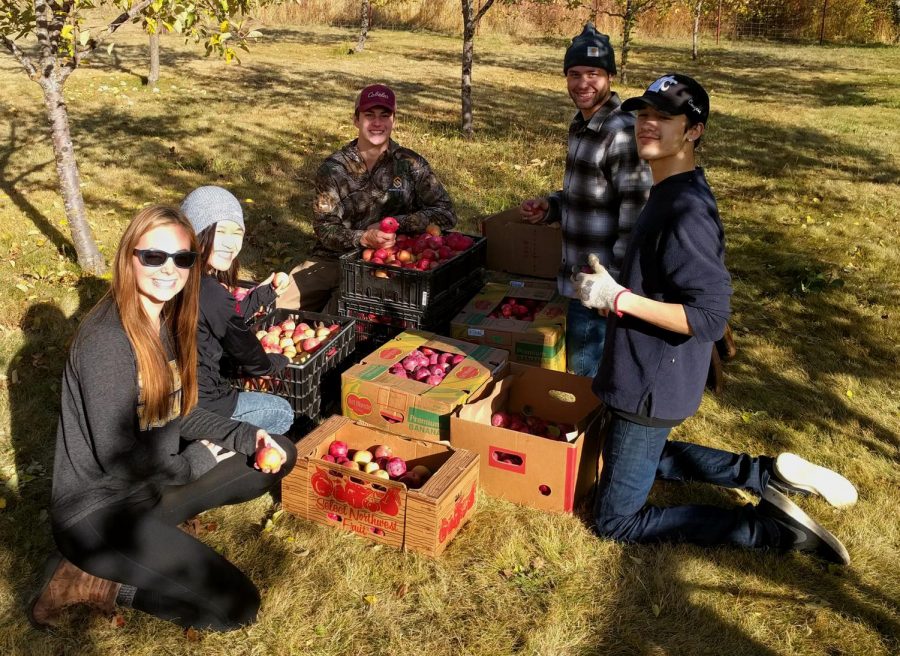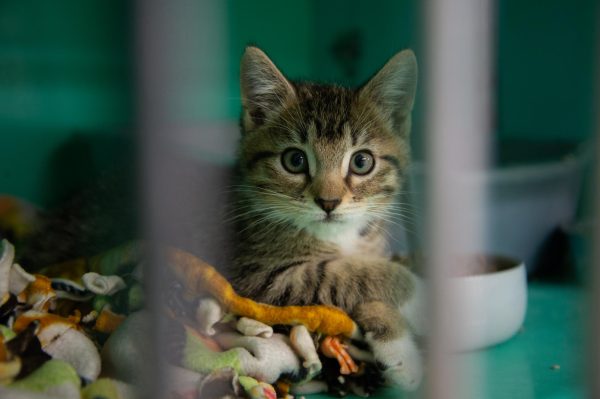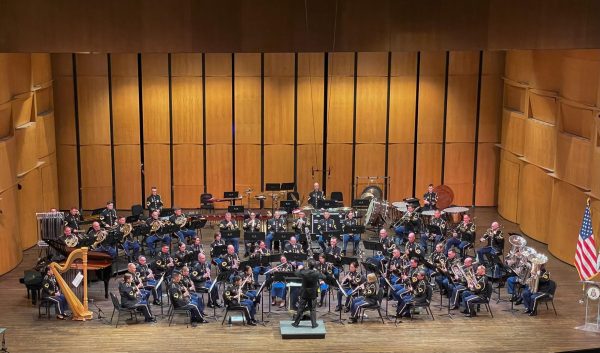Picking produce for those in need
Volunteers able to keep half, donate half of produce collected
WSU and University of Idaho students harvest food together earlier this year.
December 8, 2017
Backyard Harvest has gathered over 300,000 pounds of food within a span of 10 years and provided it to Palouse families in need.
The organization’s volunteers pick and bring fresh, local fruits and vegetables to those who need it, Executive Director Misty Amarena said.
“We love working with everyone in our community,” Amarena said, “and have opportunities spanning various interests and skill levels, including those for families with limited mobility.”
Volunteers can keep up to half of the produce they collect, Amarena said. The rest goes to 42 distribution sites, such as food banks, senior meal programs and school-based access programs.
Iris Mayes, chair of Backyard Harvest’s Board of Directors, said volunteering brings awareness to the different aspects of producing food. She hopes to bridge the gap between over-production and feeding people.
“It’s been eye-opening for me to participate in the food system this way,” Mayes said. “There’s plenty of food, yet people are going hungry.”
Winter is always a slow time for food production, but spring will have plenty of volunteer opportunities, Mayes said.
In Moscow, she will teach a gardening class where participants grow pea starters and take some home. People can learn to grow their own food and can even donate if they choose to, she said.
While Backyard Harvest gleaned about 24,000 pounds of food last year, Mayes said she would like to see the numbers go up in the future.
“Some people had manual labor jobs, get injured and then can’t work,” Mayes said. “It’s trying to help put a face on poverty for people, because when you’re not connected, it’s hard to see who needs that food.”
Volunteers from Backyard Harvest also run a booth at the Pullman and Moscow farmers markets for the “Shop the Market” program, Mayes said. The booth accepts Supplemental Nutrition Assistance Program funds in exchange for wooden tokens, which can be used at any of the participating vendors for fresh produce.
In addition to the Harvest Share program, where volunteers pick food, they also have a Community Orchard registry, through which residents with fruit trees can have the excess fruit from their tree collected, Amarena said.
The main challenges right now include trying to find proper refrigeration for the gathered produce, Amarena said. This tends to limit how much volunteers can pick.
Backyard Harvest also accepts monetary donations, which will go toward fuel for cars that transport the collected produce and volunteers, Amarena said. It will also go toward hiring seasonal staff and replacing worn-out equipment.
Backyard Harvest began as an idea in 2006 by founder Amy Grey to collect all of the excess produce from local farmers, gardeners and those with private gardens to give them to the food bank, Amerena said.
Amarena first got involved with Backyard Harvest during the Grow-Op Community Garden program. The Moscow Food Co-op collaborated with Backyard Harvest and University of Idaho Extension to create a gardening class series and eventually collect and donate the food grown, she said.
They will speak at the Food Summit, which will take place Jan. 27 and will focus on food access, Mayes said. Potential volunteers can come to learn more about the Backyard Harvest’s goals and food production systems overall.
Those interested in volunteering for or donating to Backyard Harvest can visit their website or Facebook page. They also regularly post volunteer opportunities on CougSync and VandalSync.
“Volunteering is a great thing for students to learn why there’s issues around food access,” Mayes said. “It’s happening in every single community, and it’s interesting that we live in this abundant, agricultural area and there are people without food.”





















